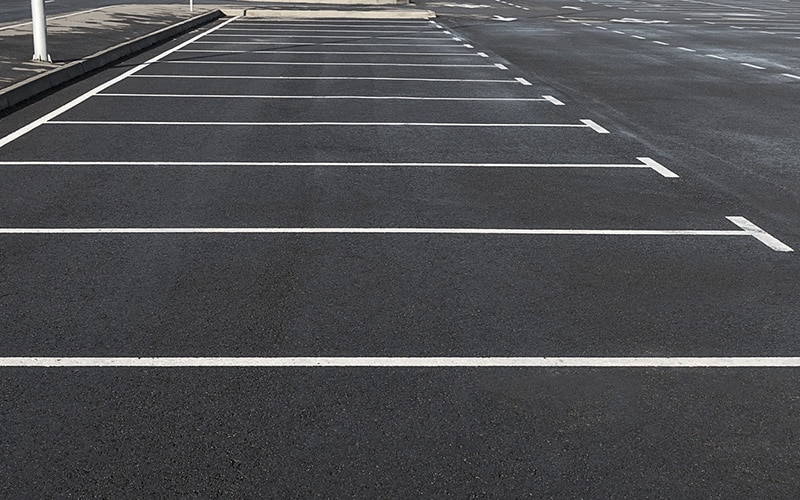Mastering Angled Parking: How Asphalt Sealing Improves Industrial Whole Lots
Wiki Article
Hot Mix Asphalt: A Sustainable Option for Sidewalk
Warm Mix Asphalt (HMA) has emerged as a leading lasting selection for sidewalk options, supplying a myriad of environmental benefits and ingenious technologies. As the demand for eco-friendly building practices expands, exploring the subtleties of HMA's sustainability can offer valuable insights right into the future of pavement options.Environmental Advantages of Warm Mix Asphalt

Moreover, Warm Mix Asphalt aids to minimize metropolitan warmth island results. Its dark shade takes in sunlight, decreasing the quantity of heat showed back right into the atmosphere contrasted to lighter-colored sidewalks. This can reduce ambient temperature levels in urban locations, lowering the demand for air conditioning and ultimately minimizing energy usage.
On top of that, Warm Mix Asphalt contributes to improved stormwater management. Its permeable nature enables water to penetrate the sidewalk and reenergize groundwater materials, minimizing overflow and the threat of flooding. These ecological advantages make Hot Mix Asphalt a lasting selection for paving roadways and freeways.
Power Efficiency in HMA Production
Is energy performance an important variable in the production of Warm Mix Asphalt (HMA)? Energy plays a significant duty in the manufacturing of HMA, impacting both cost and environmental sustainability. One crucial aspect of energy effectiveness in HMA manufacturing is the usage of warm mix asphalt (WMA) technologies.In addition, developments in plant modern technologies have led to even more energy-efficient HMA production procedures. By maximizing energy use in HMA production, the sector can minimize its carbon impact while maintaining top notch pavement materials.
Recyclability of Warm Mix Asphalt
The recyclability of Warm Mix Asphalt (HMA) is a critical aspect of its sustainability and lasting ecological effect. HMA is one of one of the most recycled products in the USA, with over 100 million bunches of reclaimed asphalt sidewalk (RAP) being recycled yearly in new sidewalk building. Recycling HMA uses several ecological benefits, such as lowering the requirement for virgin products, lowering power intake throughout manufacturing, and decreasing the amount of waste sent to garbage dumps.The procedure of reusing HMA involves milling the existing sidewalk, crushing it into smaller pieces, and mixing it with brand-new aggregate and asphalt binder to create a recycled mix. Generally, the recyclability of HMA plays a substantial role in promoting sustainable practices within the sidewalk market.

Long-Term Performance of HMA
Asphalt pavements demonstrate longevity and resilience over a prolonged duration, reflecting the long-term efficiency of Warm Mix Asphalt (HMA) The durability of HMA can be connected to its ability to stand up to rush hour tons, harsh weather, and the results of aging. Studies have shown that properly designed and appropriately built HMA sidewalks can last for 20 years or more with routine maintenance. The trick to maximizing the long-lasting performance of HMA lies in making use of high-grade products, complying with finest practices in construction, and executing reliable upkeep techniques. Correct drainage, regular examinations, and timely repair services are important for protecting the structural stability of HMA sidewalks gradually. Furthermore, innovations in HMA technology, such as using polymer-modified binders and cozy mix asphalt, have actually additionally improved the resilience and longevity of HMA sidewalks. By focusing on top quality building and construction and maintenance practices, HMA proceeds to verify itself as more helpful hints a sustainable and cost-effective remedy for resilient sidewalk facilities.
HMA: Durability and Sustainability
Showing both durability and sustainability, Hot Mix Asphalt (HMA) has ended up being a foundation in the building and construction of resilient sidewalk frameworks - hot mix asphalt. HMA's resilience comes from its ability to endure heavy lots, extreme weather, and high traffic volumes, making it a trustworthy option for highways, highways, and flight terminal runways. The structure of HMA, which normally consists of aggregates, binder, and filler, plays a crucial function in enhancing its longevity and resistance to deterioration
In addition, HMA's sustainability exists in its recyclability and energy-efficient manufacturing procedure. The ability to recycle redeemed asphalt sidewalk (RAP) in new HMA mixtures minimizes the need for virgin materials and minimizes the ecological effect of pavement construction and upkeep. In addition, the power efficiency of creating HMA hinges on its reduced mixing temperatures compared to other pavement products, leading to decreased power intake and greenhouse gas exhausts.
Conclusion
Finally, warm mix asphalt (HMA) provides a sustainable solution for pavement with its ecologically pleasant qualities. HMA's recyclability, energy performance in manufacturing, and long-lasting toughness make it an environmentally friendly option for roadway building. By conserving natural deposits, lowering waste, and decreasing greenhouse gas exhausts, HMA plays a critical duty in advertising sustainability in facilities advancement. Its ability to reduce urban heat island results better emphasizes its value in producing ecologically conscious and durable pavement systems.
HMA is one of the most recycled materials in the United States, with over 100 million loads of reclaimed asphalt sidewalk (RAP) being reused annually in brand-new pavement building and construction.The process of recycling HMA entails grating the existing sidewalk, squashing it into smaller sized pieces, and blending it with new aggregate and asphalt binder to develop a recycled mix.Asphalt pavements show durability and strength over an extended duration, showing the lasting performance of Warm Mix Asphalt (HMA) Furthermore, developments in HMA technology, such as the use of polymer-modified binders and warm mix asphalt, have actually even more boosted the resilience and long life of HMA pavements. The capacity to reuse redeemed asphalt sidewalk (RAP) in brand-new HMA mixes useful site decreases the need for virgin this contact form materials and lessens the ecological impact of pavement building and construction and maintenance.
Report this wiki page